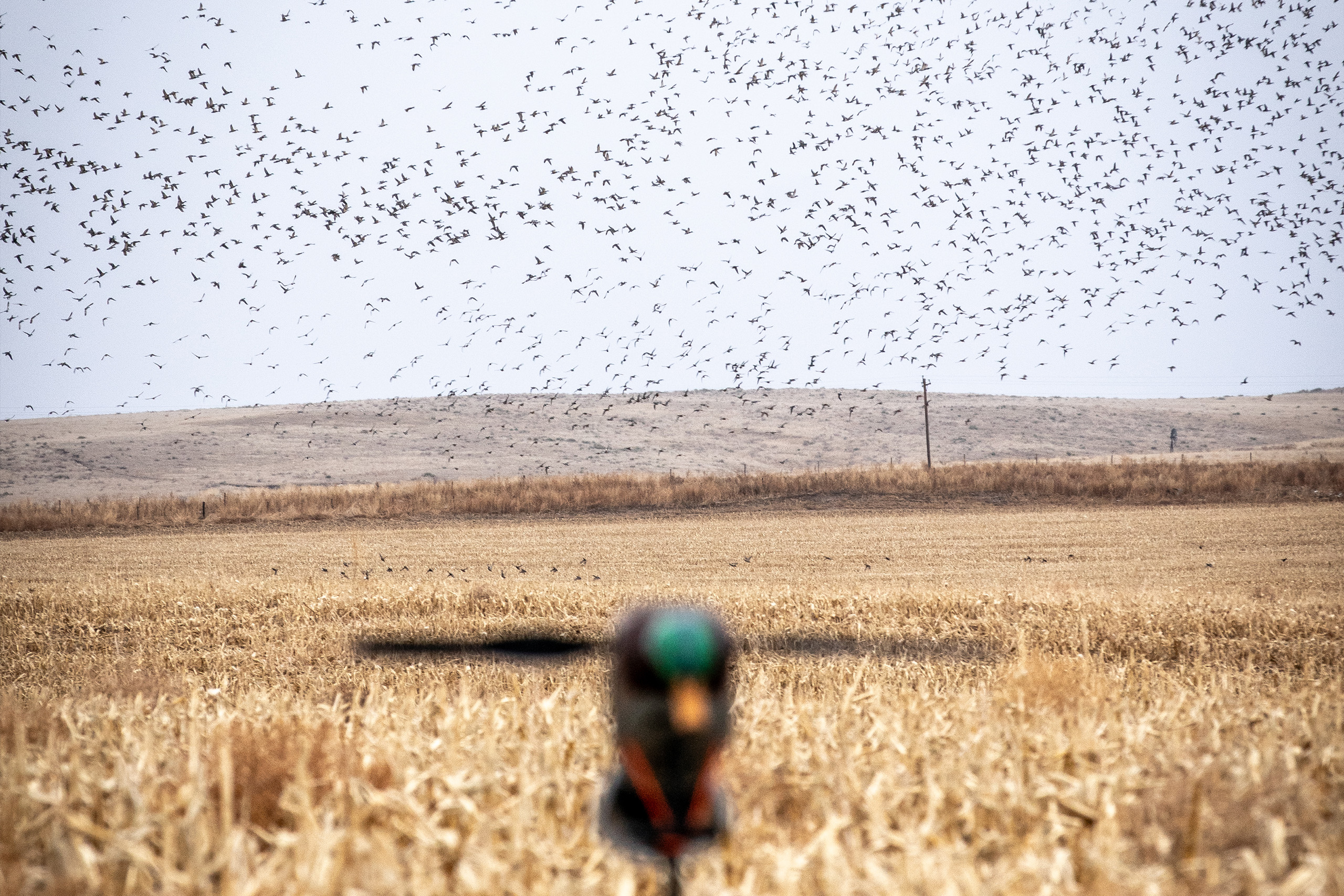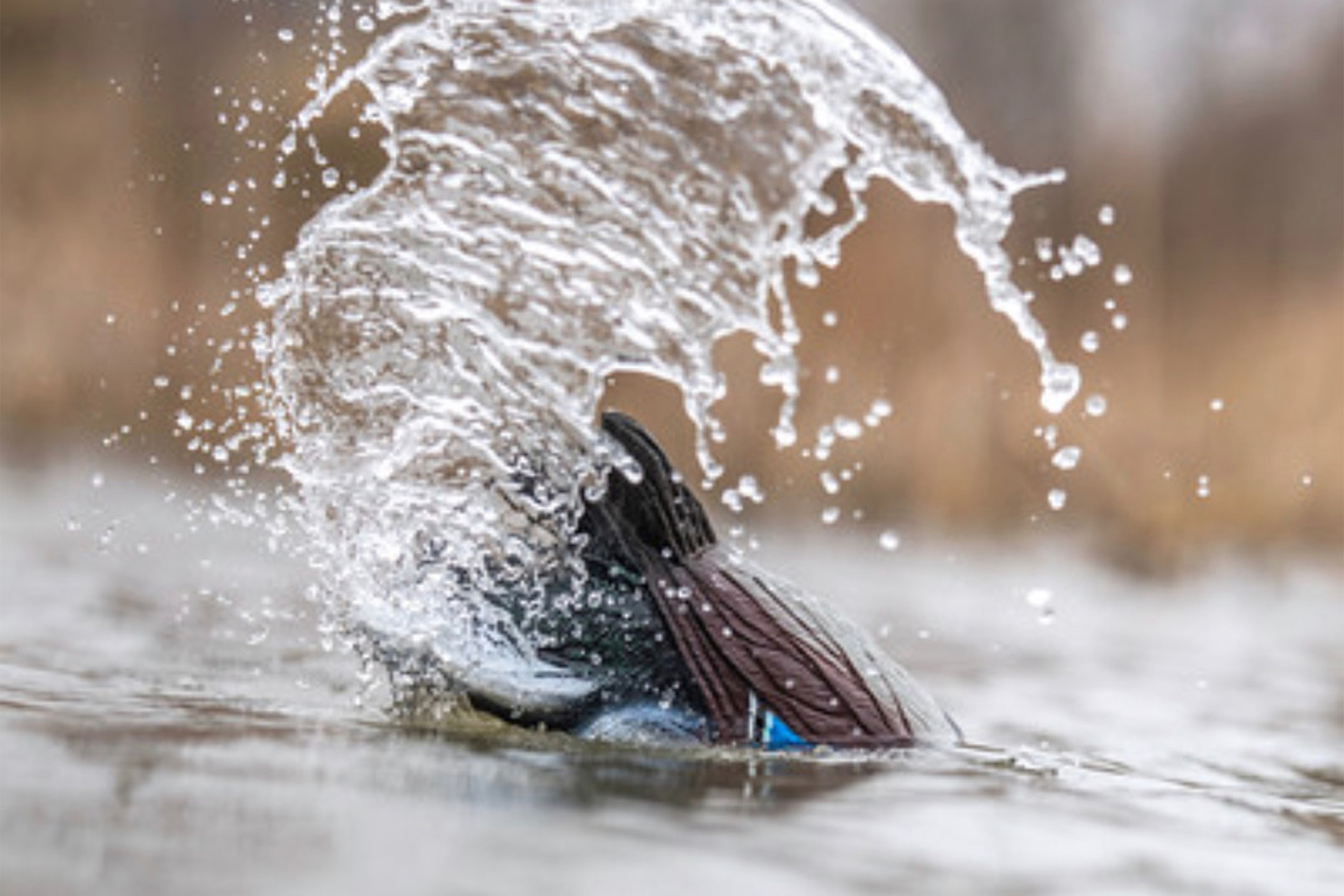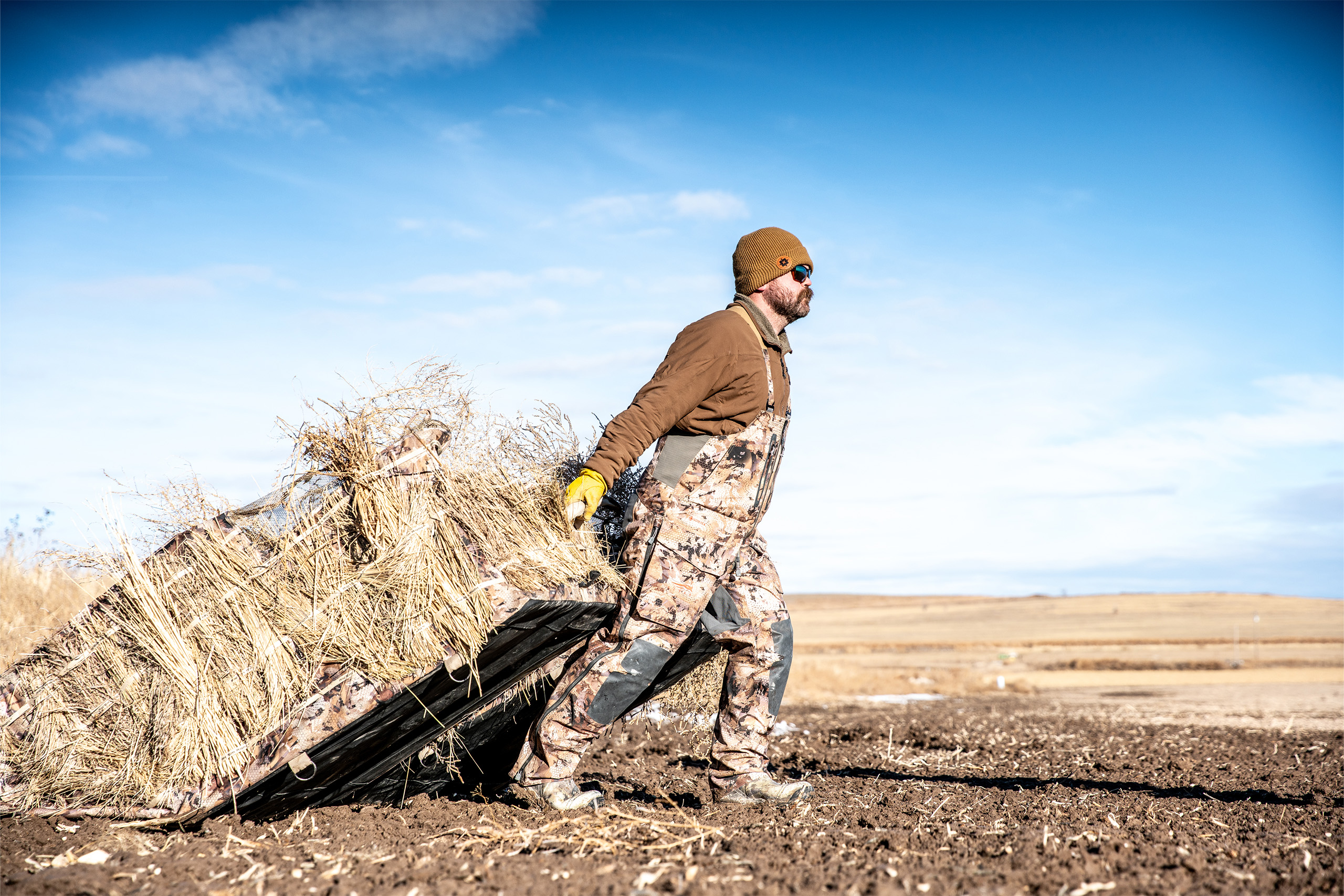Hunting the Ebb and Flow of November Duck Migration
Posted by Lucky Duck Team on Nov 5th 2024
Introduction
The month of November is a pivotal time for duck hunters in the Midwest. It brings with it a mix of challenges and opportunities as ducks migrate southward, driven by fluctuating weather conditions and the onset of cold fronts. Understanding how to adapt your hunting strategies during this period can increase your chances of success.
The Significance of November in Midwest Duck Hunting
November marks the transition from early to late season in the Midwest, which sees a shift in duck behavior due to changes in weather and hunting pressure. As the temperatures drop, ducks start their migration south, searching for open water and food sources. This period is characterized by peaks and lulls in migration, with some days bringing waves of new ducks and others showing little activity. Successful hunters learn to work with these patterns and adjust their approach accordingly.

Embracing the Challenges of Migration Patterns
The unpredictable nature of migration in November means that hunters must be flexible. Ducks may be abundant on some days and scarce on others, depending on the weather and availability of resources like food and water. To maximize your opportunities, it's important to recognize the signs of an impending migration push and know how to adjust your tactics when the migration slows.
The First Possibility: The Big Push
When a strong cold front arrives, it can trigger a significant migration event, known as the "big push." Ducks from northern regions are driven southward in large numbers, seeking open water and warmer climates. This influx of new birds can create excellent hunting conditions for those who are prepared.
The Impact of Cold Fronts on Duck Migration
Cold fronts are one of the most reliable triggers for duck migration. As temperatures drop in the north, water bodies start to freeze, pushing ducks southward in search of unfrozen lakes and rivers. Hunters who pay attention to weather forecasts can anticipate these migration events and position themselves accordingly.
Top Spots for Hunting Migrating Ducks
When hunting during a migration push, it’s essential to choose locations where ducks are likely to congregate. These include large bodies of water, river systems, and areas with ample food sources.
Big Water Advantages: Big lakes and reservoirs often serve as rest stops for migrating ducks. These locations provide the feeling of safety in numbers.
Identifying Shoreline Points and Islands: Ducks often tend to follow shorelines and use natural landmarks such as points and islands as navigation aids. Setting up near these areas can increase your visibility to passing ducks.
Decoy Strategies for High-Altitude Migrators
When ducks are migrating at high altitudes, visibility is key to attracting their attention. A larger decoy spread with varied species and positions can help create a realistic and inviting setup.
Building a Large and Visible Spread
Migrating ducks are drawn to large decoy spreads that mimic a substantial flock resting or feeding. A spread of 100 or more decoys, including a mix of species, can make your setup more appealing to migrating birds passing overhead.
Incorporating Multiple Species and Motion Decoys
By using decoys that represent different species, such as the Lucky HD Mallard and Lucky HD Teal, you can add variety and increase the realism of your setup.
Adding different motion decoys, such as feeders, swimmers, and spinners, helps create the illusion of a lively group of ducks engaging in everyday activities. For instance, the Agitator HDi adds splashing water to the spread, generating ripples that simulate the natural movement of ducks on the water.
Setup Secrets for Success
Decoy placement and blind location are critical for a successful hunt during migration peaks. Being too far away from the action can be the difference between filling your limit and getting no birds at all.
Optimal Blind Placement
Position your blind where you can take advantage of natural cover, such as tall grasses or reeds. Blinds should be well-camouflaged and set up to face incoming birds, with the wind at your back or at a slight angle to encourage ducks to approach from the front.

Playing the Wind and Open Water Approaches
Wind direction typically influences how ducks approach a decoy spread, unless the wind is very light. Set up your spread expecting the ducks will land into the wind, with open water leading them toward the decoys. This strategy allows you to take clean shots as the birds approach or circle around.
The Second Possibility: The Lull
During migration lulls, when duck activity is lower than usual, hunters need to adapt their tactics to increase their chances of success. This period requires a more strategic approach, focusing on smaller bodies of water and a minimalist decoy setup to capitalize on opportunities.
Adjusting Tactics During Migration Lulls
When the migration slows, ducks tend to be more spread out, often resting in secluded areas with minimal disturbance as the pressure on them increases. This situation demands a shift away from traditional tactics used during peak migration. It’s a good idea to focus on quieter spots where ducks may gather to rest or feed away from the hunting pressure they have started to associated with larger bodies of water.
Targeting Smaller Bodies of Water
Scouting is key during lulls. Smaller ponds, creeks, or backwaters can be prime locations during migration lulls. These areas offer secluded refuge and provide ducks with natural cover, making them more likely to rest there. Hunters should scout these locations in advance to identify spots with signs of duck activity, such as feathers, tracks, or feeding signs. Setting up in these lesser-known areas can help catch ducks off guard.
Minimalist Decoy Approaches
In smaller bodies of water, a minimalist approach to decoy placement can be more effective than large spreads. Ducks may be accustomed to seeing small groups of birds in such environments, so using a limited number of decoys—say, 12 - 30—can create a realistic setup without overwhelming the space. Focus on using high-quality, realistic and motion decoys that mimic ducks naturally resting or feeding.
Small-Water Hunting Techniques
Hunting in tight quarters requires adjusting your techniques to the smaller environment. Position the decoys close to the shore, where ducks are likely to land. Setting them in a loose cluster can mimic a small flock at rest. It's also helpful to create an obvious landing zone by leaving open water near the decoys, encouraging ducks to approach.

Importance of Stealth and Concealment
In smaller settings, ducks can more easily detect any unusual movement or out-of-place features. Hunters need to prioritize concealment and minimize noise. Use natural cover, such as tall grasses, cattails, or brush, to blend in with the surroundings. If using a blind, make sure it is camouflaged appropriately to the environment and positioned for optimal visibility of the landing zone.
Adapting Calling Strategies
During migration lulls, ducks are likely to be more cautious and may not respond to aggressive calling. Use subtle calling techniques to avoid spooking wary birds. Softer calls, such as gentle quacks and feeding chuckles, can mimic ducks behaving naturally in small groups. Listen and observe the ducks’ reactions; if they show signs of hesitation, reduce the frequency of calling or stop altogether to avoid alarming them.
Leveraging Weather Changes
When it comes to duck hunting, weather plays a pivotal role in influencing bird behavior. Changes in weather patterns can significantly affect duck movement, feeding, and roosting habits. Hunters who can anticipate these shifts and adjust their strategies accordingly stand a better chance of success.
Seizing Opportunities During Weather Shifts
Cold fronts, wind shifts, and precipitation can create prime hunting conditions by pushing ducks into new areas. During a cold front, ducks often move southward in search of open water and food, making it an ideal time to hunt. Similarly, rainy or windy weather may encourage ducks to seek sheltered areas, such as small ponds or backwaters. Hunters can capitalize on these conditions by setting up decoy spreads in these spots, using the natural cover to stay concealed.
On the other hand, sunny, warmer, calm days may require a different approach. Ducks are less likely to move during such conditions, so scouting for areas where they are already resting becomes essential. Adjusting decoy setups to smaller, more realistic spreads and focusing on subtle calling can help coax ducks into range, or opt for jump shooting strategies instead.
Understanding Duck Roosting Behavior
Roosting sites are areas where ducks rest and spend the night, usually on large bodies of water or safe wetlands. These spots are critical for ducks, providing a safe haven from predators and harsh weather. Hunting roosting areas can be productive, especially during cold weather when ducks are less likely to travel far from their resting sites. However, it requires a balanced approach to avoid over-pressuring the birds.
Balancing Hunting Pressure and Conservation
Effective duck hunting also involves understanding the impact of hunting pressure on duck populations. Over-hunting can push ducks out of an area, making future hunts less productive. Being mindful of the frequency and intensity of hunting in one location helps preserve the area’s attractiveness to ducks. Giving the birds time to rest and recover will encourage them to return, keeping the hunting spot viable throughout the season.
Deciding When to Hunt Roosting Areas
Hunting roosts can be a double-edged sword. It can yield a productive hunt if conditions are right, but frequent hunting in these spots can drive ducks away permanently. It’s crucial to evaluate the state of the season, hunting pressure, and bird behavior before deciding to hunt a roosting area. If you choose to hunt a roost, consider limiting the frequency to reduce the disturbance and plan to move to another location in subsequent hunts.
Adapting to Daily Changes
Duck hunting is dynamic, and conditions can shift rapidly throughout the day. Being able to adapt to these changes can make the difference between a successful hunt and an unproductive one.
Prepare for Variable Hunting Conditions
Prepare for a range of weather scenarios and be ready to modify your strategy as conditions change. This could mean adjusting decoy spreads, moving to a new hunting location, or switching up calling techniques. Bringing versatile gear, such as portable blinds and a variety of decoys, can help you respond to changing conditions without missing opportunities.
Adjust Strategies for Maximum Success
Pay attention to how ducks respond to your setup throughout the hunt. If they seem hesitant or avoid a specific area of your spread, consider moving decoys further or closer to your blind, changing the configuration and density of your decoys, or reducing the total number of decoys you have deployed to create a more natural appearance. Additionally, adjusting your calling strategy to reflect the ducks’ activity levels can help bring them in closer.
Conclusion
Maximizing your success in November duck hunting requires flexibility and a keen understanding of how weather, pressure, and duck behavior intertwine. By staying observant, making strategic adjustments, and being mindful of hunting pressure, you can consistently find opportunities even during challenging conditions.
Embrace the Dynamic Nature of Duck Hunting
November often brings a mix of migration peaks and lulls, demanding that hunters be adaptable and proactive in their strategies. Embrace the challenges, leverage weather changes, and continually refine your approach to make the most of the ever-changing nature of duck hunting! This mindset will not only lead to more successful hunts but also enhance your appreciation for the sport.
Whether you're dealing with cautious late-season ducks or diversifying your approach for mixed species, Lucky Duck's versatile motion decoys make it easy to adapt your strategy. Don’t miss out on the opportunity to upgrade your hunting gear—explore the full range of Lucky Duck decoys today and make your next hunt your most successful one yet.
Shop Lucky Duck Decoys today!
